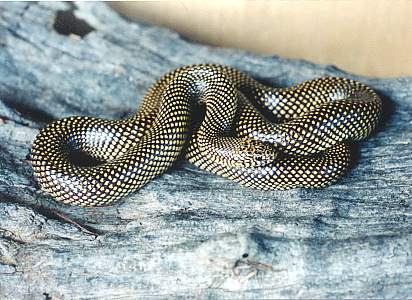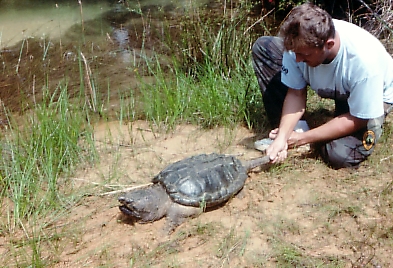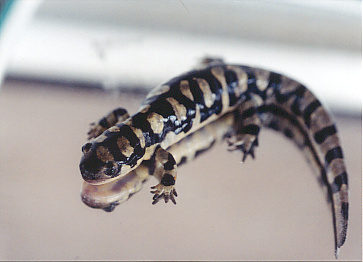|

(Above)
Apalachicola Kingsnake
(Lampropeltis getula).
An unusual color form of the Common
kingsnake
occurs in the Apalachicola National Forest
&
surrounding region of NW FL. Due
to its rare
color phase and limited distribution, it's
unfortunately highly prized within the pet
trade.
Liberty Co., FL.

(Above) Karl & Alligator snapping turtle (Macrochelys
temmincki), Eglin AFB, 1988. Photo taken by Dr. Dale R. Jackson! Santa Rosa Co., FL.
The Alligator
snapper has declined greatly across the deep South, primarily due to the turtle soup industry. The Alligator snapper
is also one of the largest freshwater turtles in the world, with weights of at least 235 lbs!
(Below) Eastern Tiger salamander
(Ambystoma t. tigrinum). Tiger salamanders
are rare in NW Florida & adjacent Georgia,
Alabama & Mississippi. They utilize
ephemeral wetlands to breed during
winter months. Calhoun Co., FL.

|



